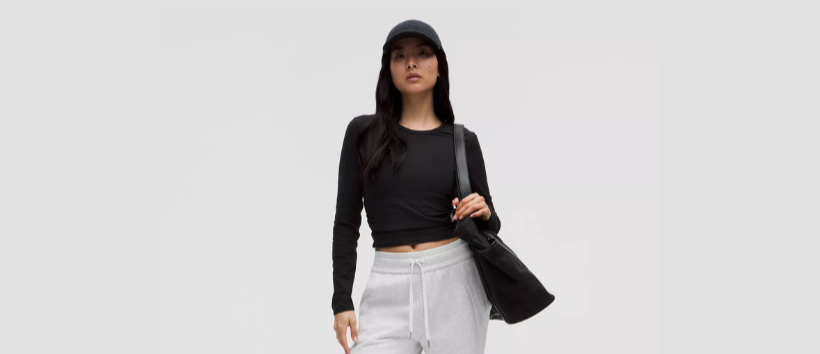Recently, Chinese social media platforms like Weibo have seen a surge in discussions around going braless, with hashtags calling for women to feel no shame in skipping bras altogether. While movements like #NoBra and #FreeTheNipple have made waves in the West, is China ready to embrace this shift?
A Growing Demand for Comfort in Lingerie
The market for women’s underwear in China was worth RMB 123.9 billion ($18 billion) in 2020 and is projected to reach RMB 174.6 billion ($25 billion) by 2026. Over the years, comfort has become a key priority for consumers. Increasingly, products are marketed as “no feel” or “lightweight,” with brands focusing on providing relief from the discomfort of traditional bras.
In 2018, Ubras introduced its now-famous ‘sizeless bras 无尺码内衣,’ offering wire-free designs that cater to all body types. These bras have a vest-like appearance and provide freedom from the restrictions of traditional sizing. The concept has gone viral, and nearly all major lingerie brands in China now offer sizeless options. Although still niche — making up only 12% of the market — this category is gaining traction.
Meanwhile, some consumers have raised concerns about these bras being better suited to smaller sizes. For women with larger busts, support and more customised designs are still necessary. New brands like Natapar 奶糖派 and Livary Mio 里性 are stepping in to address this gap, offering plus-size bras that focus on support and style.

Image via Natapar Taobao page
The Rise of Cooling Bras and Nipple Covers
Comfort-first innovations are also driving growth in the wireless bra segment. Herbaceous Primary Color 草本初色, founded in 2018, has become a standout success in this space. The brand's cooling, wireless bras — made from breathable rayon — are marketed as “walking air conditioners.”
Their affordable pricing, RMB 99 ($14) for two pieces, and comfort-driven design have resonated with consumers, particularly during the sweltering summer months. The brand's sales have skyrocketed on platforms like Douyin, with a staggering RMB 179 million ($26 million) in July alone, driven by livestreams and short videos.
Similarly, nipple covers have become a popular alternative. While bras still dominate the women’s underwear market on Douyin, accounting for 25.8% of sales, nipple cover sales increased by 858% year-on-year. This growth reflects an evolving consumer attitude toward comfort and body freedom.
Social Media: A Mixed Reaction to Going Braless
While hashtags like #NoBra have gained traction online, the comments reveal mixed feelings. “It’s comfortable not to wear bras, but the stares on the street make me uncomfortable,” one user shared.
Others express concerns about social judgment, with one commenter saying, “Wearing a tank top on the street will get you scolded, let alone going without underwear.”
Many women still prefer maintaining a specific appearance in public, often seeking products that enhance a 'curvy' look. At the same time, there is a growing call for the freedom to wear what feels right, with users emphasising that such choices should be based entirely on women’s individual needs and desires.
What Can Brands Learn?
While the topic of going braless has sparked online discussion, it’s clear that China’s no-bra movement is still in its early stages. However, brands that focus on delivering comfort, inclusivity, and emotional value are well-positioned to thrive in this evolving market.
For lingerie brands operating in China, understanding these nuanced shifts in consumer preferences is key. While comfort is becoming a top priority, brands must also address other concerns like body shape, size inclusivity, and social acceptance. Here are a few takeaways:
- Prioritise Comfort: Chinese consumers are increasingly choosing lingerie that prioritises comfort, especially in hot weather. Lightweight, breathable fabrics are essential.
- Design for All Sizes: Brands should focus on creating specific products for different body types, with options for both smaller and larger sizes.
- Promote Body Positivity: Encourage women to wear what feels right for them and empower them to make choices based on their own needs and desires, rather than societal expectations.
- Leverage Social Media: Platforms like Douyin and Little Red Book are essential for connecting with Chinese consumers. User-generated content and influencer partnerships can help build trust and credibility.
Contact the Hot Pot China team at nihao@hotpotchina.com to discuss bespoke strategies for navigating China’s evolving lingerie market and unlocking commercial success.
Case Study:
La Perla increased sales in China by 230%
La Perla was perceived by some as the ‘Hermes of lingerie’ in China. However far more revealed that they would only purchase La Perla when discounted, because it was ‘too expensive’.
Hot Pot helped La Perla reposition as an inspirational brand that celebrates all aspects of womanhood and justified its rightful place among the world’s iconic luxury brands.
Discover how Hot Pot China transforms a global icon for China with the La Perla case study.
Related blog posts

